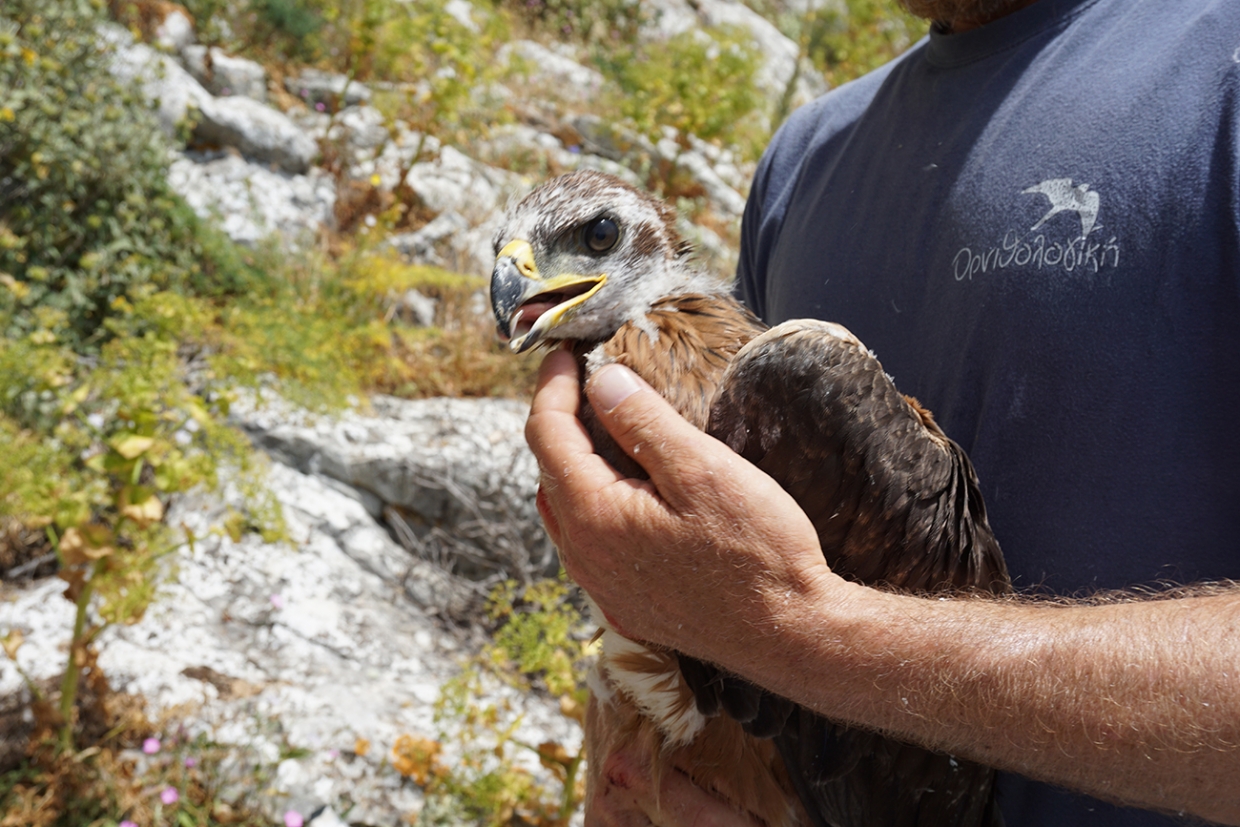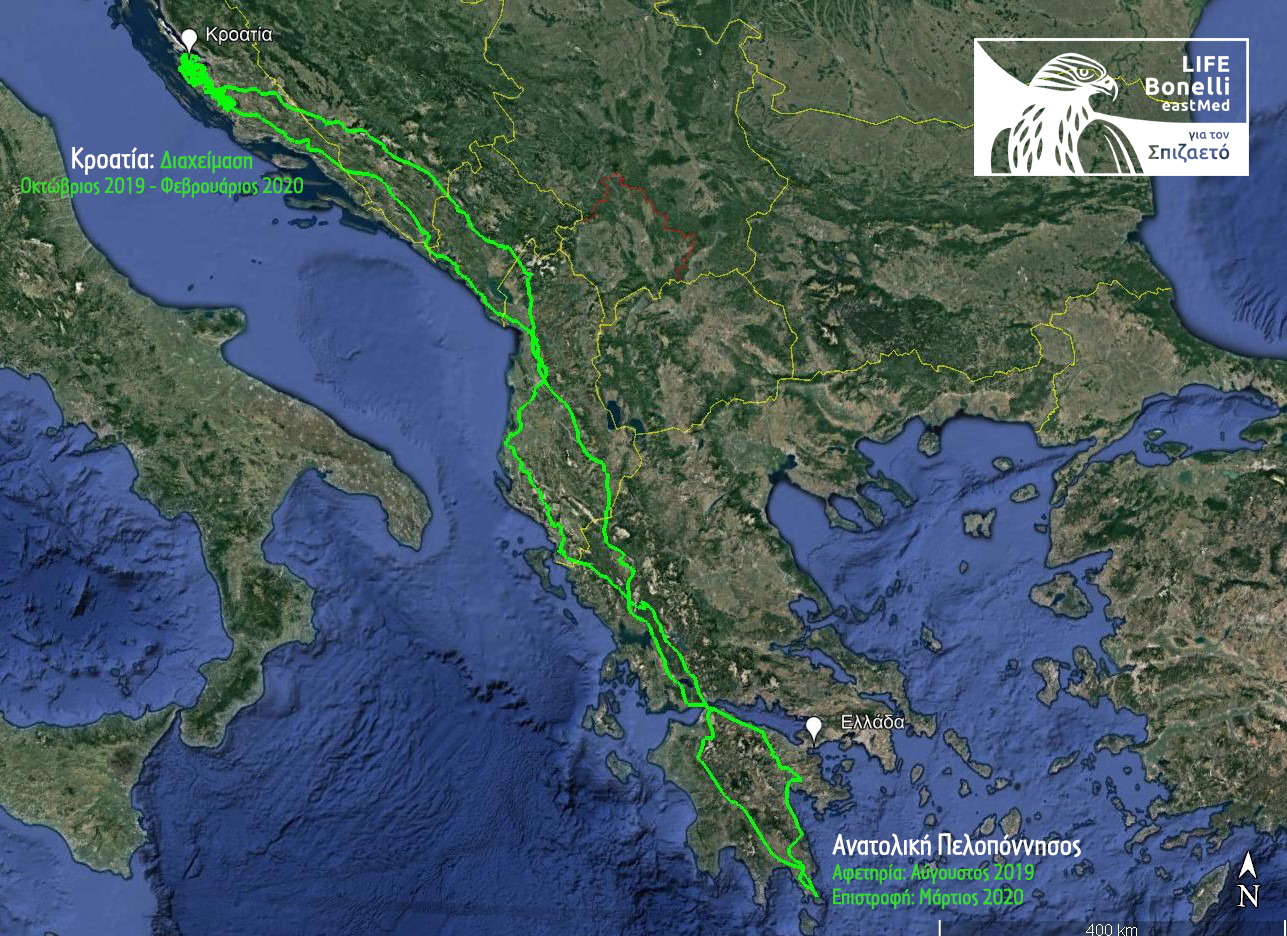A Bonelli’s Eagle travels: from Peloponnese, Greece to Zadar, Croatia and back

The Bonelli’s Eagle is a typical species of the Mediterranean coastal regions. As a monogamous, territorial eagle species, the couple stays together for life and does not allow any other couple in its territory: that means an area that in some regions can extend up to 100 square kilometers!
Subadult Bonelli’s Eagles are known to make great dispersal movements during the first three years of their life, searching for areas with abundant forage and relative security. These movements may be exceptionally long, reaching distances of more than 1,000 km, thus connecting different subpopulations of the species throughout its occurrence range. If they manage to avoid the non-negligible risks they face, Bonelli’s Eagles will reach adulthood from the fourth year of their lives and will start to reproduce.
Under the LIFE Bonelli eastMed Project, 25 Bonelli’s Eagle chicks born in Greece and Cyprus were tagged with satellite transmitters. The aim is to study, for the first time, the movements of immature individuals in the region, in order to locate the important areas for the species, but also to detect the threats for the birds in these areas.
During the first year of project monitoring, the longest dispersal movement that was recorded belongs to a Bonelli’s Eagle born in eastern Peloponnese, tagged by the Hellenic Ornithological Society/BirdLife Greece in May 2019. This particular individual chose to overwinter in Croatia, mainly in the area around the city of Zadar, in Central Croatia.
The 1,000 kilometers trip began before the end of summer. After a short stop in coastal Albania, the juvenile eagle found his preferred wintering area in Croatia, after a 15-day wandering around the Adriatic Sea coast. During his stay there, he was hunting mainly in agricultural areas around wetlands or in open grasslands in hilly areas. By the end of February he followed the reverse route that brought him back to the place where he was born. Today we are happy to have the chance to observe him in Greece once again!


The selection of Croatia as an overwintering area is not accidental. The Balkan countries of the Adriatic Sea coast (Albania, Montenegro, and Croatia) are known to host breeding pairs of Bonelli’s Eagles. Sadly, the information that we get from the ornithologists of BIOM (BirdLife Croatia) are not encouraging. The last proven case of breeding Bonelli’s Eagles in Croatia date back to the early 1980s, in Krka National Park. Since then, the species has been observed only a few times and no active territories have been found. Therefore, it has been classified as Critically Endangered (CR, the highest red list category) in the Croatian Red List, as there is a chance that a small number of pairs (no more than two) may still survive undetected, since Bonelli’s Eagle is a raptor over-cautious towards humans.
We are confident that the continuous conservation efforts for this charismatic species are going to lead to the restoration of its breeding population in Eastern Mediterranean. But, as it has become obvious from the monitoring under LIFE Bonelli eastMed Project, all the countries of the region are acting as “communicating vessels” for the species, making profound the need for implementation of actions in the widest range possible. After all, birds know no borders, so the same goes for our conservation actions. For this reason, LIFE Bonelli eastMed Project is creating a multi-level network of stakeholders that will work towards reaching the conservation goals for the species. This network will include representatives from forestry services, government officials, power line companies, environmental NGOs, climbing and mountaineering clubs, etc.













